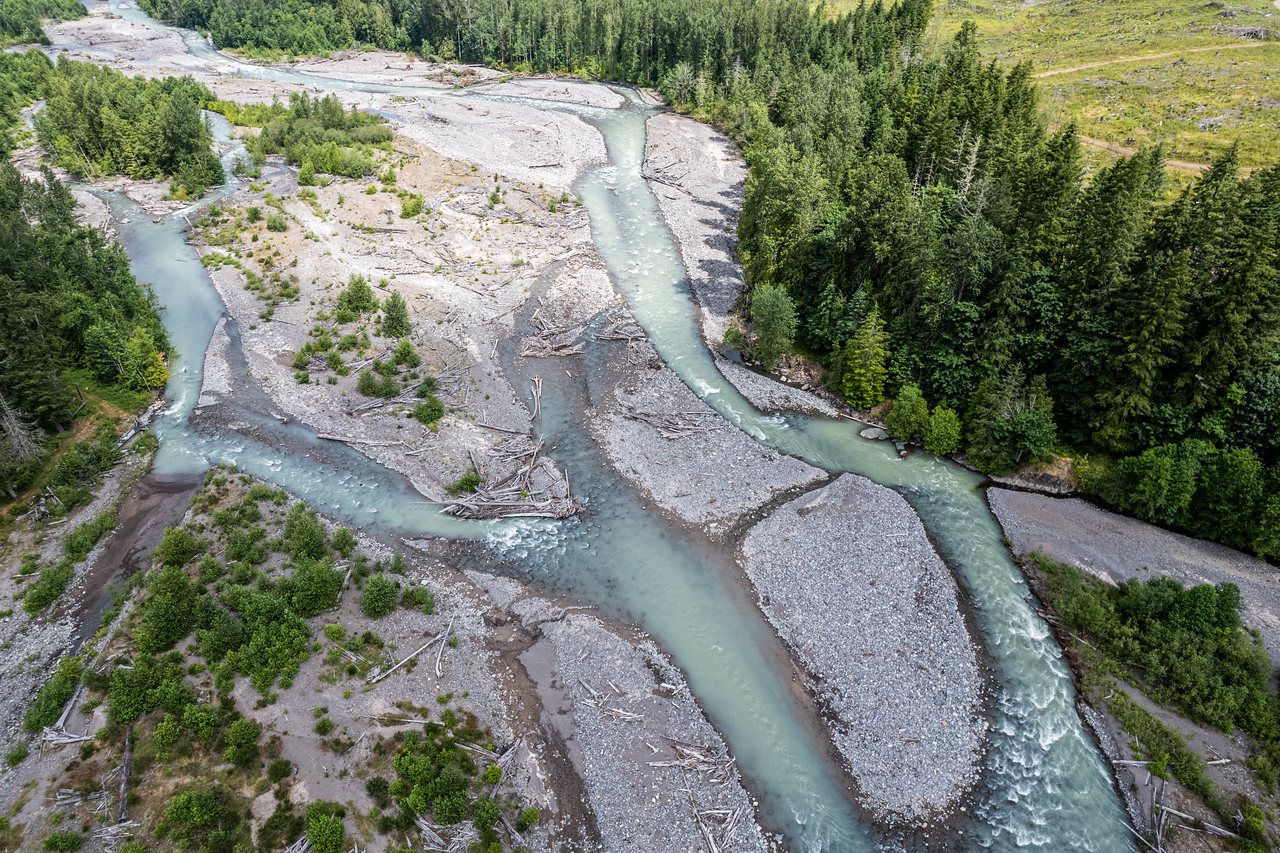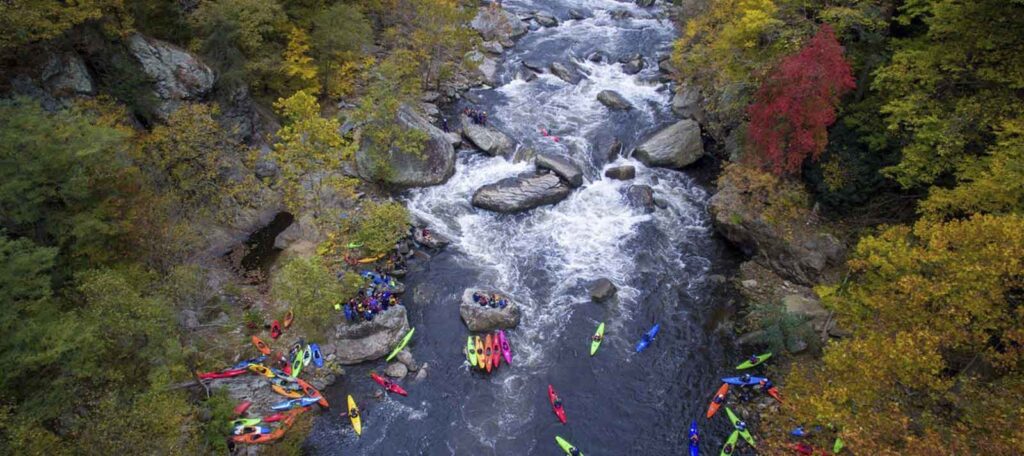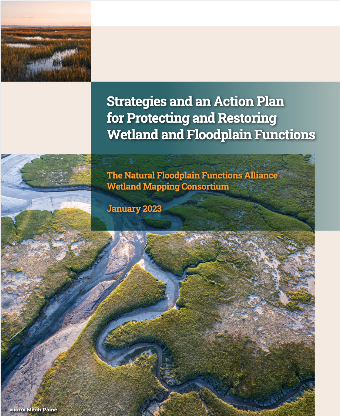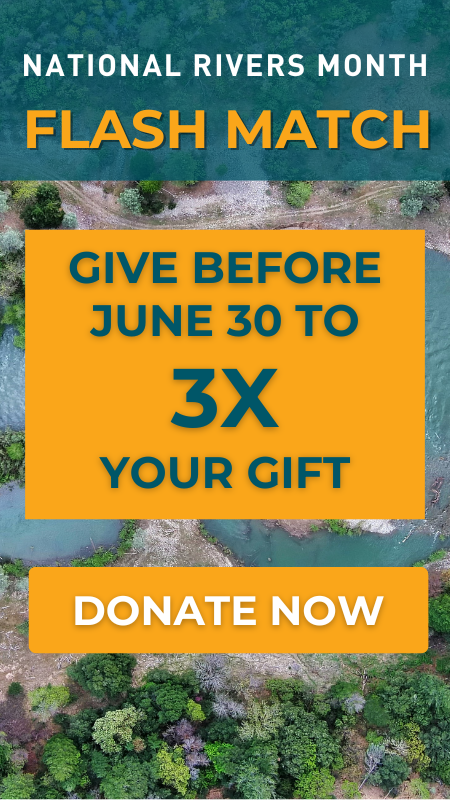New report: Strategies and an Action Plan for Protecting and Restoring Wetland and Floodplain Functions

All life depends on rivers, and all rivers depend on floodplains. Our rivers and communities are facing unprecedented challenges of biodiversity loss, racial injustice, and the climate crisis. Healthy, functioning floodplains must be a part of the solution.
Like wetlands, these river-adjacent landscapes are often described by the benefits they provide to society. They are “nature’s kidneys” because they filter out pollutants, “sponges” because they absorb flood waters, “biological super systems” because they are some of the most biodiverse ecosystems on earth. In the field of floodplain management, we call the biological, physical, and chemical processes that provide benefits to society “floodplain functions”.
Despite the benefits that they provide, the obvious flood risk, and laws and policies that are intended to protect them, floodplains are constantly under development threat from urban sprawl, agriculture, logging, energy development, transportation, channelization, and levees. The impact of losing floodplains to development is increased flooding, releases of carbon and methane into the atmosphere, degraded drinking water quality, polluted streams and rivers, and loss of wildlife habitat- all of which are exacerbated by climate change. To protect existing floodplains from development, and to restore damaged floodplains, we need to be able to communicate the value of floodplains to society. This starts with understanding the extent and quality of floodplains across the nation.
Since 1991 the U.S. Fish and Wildlife Service has conducted a national status and trends study on wetlands across the United States. This first report noted that in the early 1600s, the area that was to become the conterminous United States had approximately 221 million acres of wetlands but by the mid-1980’s this had reduced to 103 million acres. The 2011 report found that wetland losses outdistanced gains between 2004 and 2009. Unfortunately, the United States has not conducted a similar effort to track gains and losses in functional floodplains and we cannot cite nationwide statistics and communicate floodplain loss in the same way we do for wetlands. Without comprehensive, nationally led data and analysis for floodplain functions and extent has resulted in disjointed and unstable efforts to protect and restore floodplains in the U.S.

Let's Stay In Touch!
We’re hard at work for rivers and clean water. Sign up to get the most important news affecting your water and rivers delivered right to your inbox.
In recognition of this challenge, the Natural Floodplain Functions Alliance and the Wetland Mapping Consortium hosted a multi-year initiative and a series of workshops to identify barriers to greater integration of wetland and floodplain management. The resulting report: Strategies and an Action Plan for Protecting and Restoring Wetland and Floodplain Functions provides the results of this workshop series and presents policy, data, funding, and communications recommendations to increase the protection and restoration of wetlands and floodplains.
Functioning floodplains are a necessary solution to address the climate change and biodiversity crises that we face today. The strategies and recommendations included in the report are intended to provide a launching pad to coalesce federal leadership and support for the protection and restoration of wetlands and floodplains across the nation.



